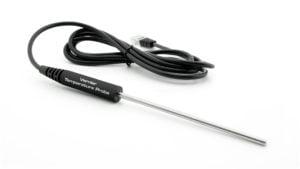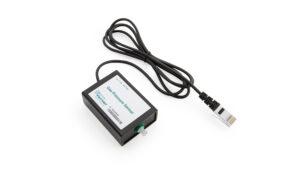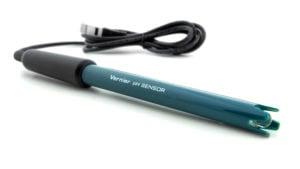When Stacey Howell returned to teaching high school chemistry after raising her family, she found a very different world: email, computer labs, and other technologies had become a normal part of the curriculum. Fortunately, Utah’s Davis High School offered classes that helped bring her up to speed. Also, she was able to obtain grants to purchase a variety of Vernier sensors and TI calculators. With a little training (and some help from her students), Howell soon began seeing some remarkable results in her classes.
“Before I was introduced to the Vernier probes and TI calculators, my students collected data in traditional labs,” Howell recalls. “They could see some of the results, but they never really ‘got’ the lessons. By adding the Vernier pressure sensors and temperature probes, suddenly Boyle’s Law and Charles’s Law came to life! The kids just ate up those labs, and really understood what they were doing.”
Howell received her first introduction to the Vernier products during a week-long professional development session at Layton High in the Davis School District. An initial grant allowed the school to purchase some data-collection technology.
“They immediately started asking, ‘When are we going to do another lab with those calculators again?”
“In the training we did lots of labs with the Vernier representative, and by the end of the week we all thought ‘Yeah, we need these!’” says Howell. “I have to admit, my first few labs were a little shaky. But once the kids got their graphing calculators set up, they were able to help me through math part of the process, and we all had a great time. They immediately started asking, ‘When are we going to do another lab with those calculators again?’ How often do you hear that in chemistry?”
Now a more seasoned user of the Vernier products, Howell introduces them to her chemistry classes with a lab on endothermic/exothermic principles, using Vernier Temperature Probes and the TI calculators. Soon after, her students work with Gas Pressure Sensors and Temperature Probes to test out Boyle’s and Charles’s Laws.
“The pH Sensors help the kids really see a titration curve.”
When it’s time to study acid-based solutions, Vernier’s pH Sensors come into play. Howell says this is when students’ enthusiasm kicks into high gear. “The pH Sensors help the kids really see a titration curve,” Howell notes. “Then they get very excited when we titrate a diprotic acid, and they can see the second titration curve. They truly understand that it takes this much more acid to create that reaction – it’s a big ‘wow’ moment for them.”
Just after the holidays, Howell has the ideal way to channel students’ post-Christmas doldrums: with the “Ice Cream Lab.” In this experiment, which focuses on freezing-point depression, students must research the cheapest, least-toxic, most environmentally friendly type of salt for solidifying their milky concoction. With the help of a Vernier Temperature Probe, they easily identify the optimum compound: Good old NaCl – table salt – works best. “We have lots of snow by then, so I don’t have to spend money on ice, either!” Howell laughs.
“The previous year, without the TI and Vernier equipment, the previous AP Chemistry teacher only had a 33 percent pass-rate, with not everyone in class taking the final test. I had everyone in my class take the test, and we ended up with an 80 percent pass-rate!”
Aside from her newfound facility with technology tools, Howell is proudest of the dramatic results they’ve made possible for her students. “Last year was the first time that I’d taught AP Chemistry since coming back,” Howell reveals. “The previous year, without the TI and Vernier equipment, the previous AP Chemistry teacher only had a 33 percent pass-rate, with not everyone in class taking the final test. I had everyone in my class take the test, and we ended up with an 80 percent pass-rate! This year I’ve doubled my class size and then some, and I’m hoping the scores will improve even more.
“I attribute the students’ success to the labs we were able to run with the Vernier and TI equipment,” concludes Howell. “At last they’re able to get good results quickly. I’ve quit saying ‘I know this is the result you got, but this is the result you were supposed to get. The Vernier sensors and probes have truly helped my students internalize their learning. Now, it all makes sense to them. I’m so proud of all of them!”



